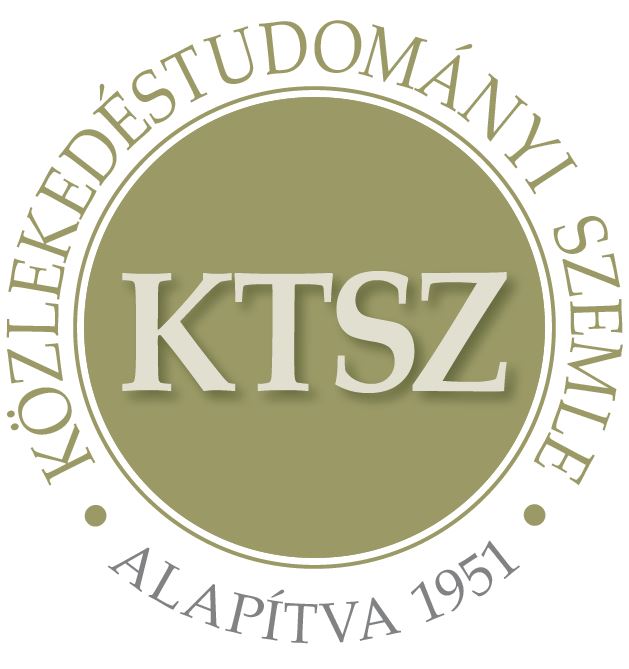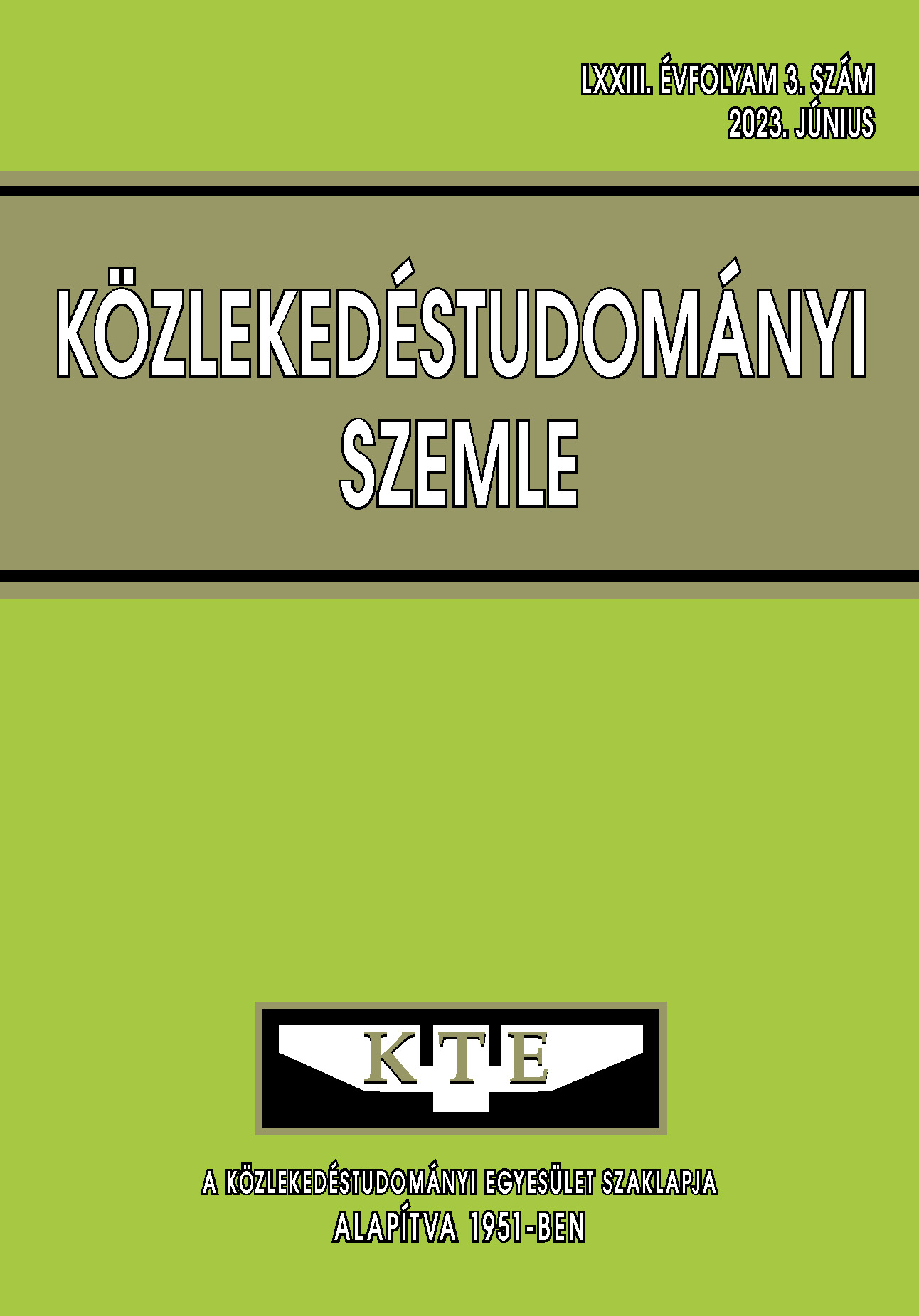Application of network science in public transport
Abstract
Public transport networks, like all networks, consist of a multitude of connections. The system of these connections builds up the transport service in the form of lines, routes and journeys. From time to time the question arises if our transport network is efficient and well organised. This article discusses the application of Barabási's network theory methods
to public transport and discusses the further development of the application of these theoretical methods to practical evaluations, using examples of the Hungarian rail and bus transport systems. The paper addresses questions such as whether these methods can help to assess the goodness of public transport networks, to judge whether a public transport network is sufficiently well organised or not.
References
Barabási Albert-László: Behálózva - A hálózatok új tudománya, Helikon Kiadó 2003.
Karinthy Frigyes: Minden másképpen van (Láncszemek), 1929
Barabási Albert-László: A hálózatok tudománya, Libri 2017.
Erdős Pál – Rényi Alfréd: On Random Graphs I, Publicationes Mathematicae vol. 6, 290-297 (1959)
Watts, D. J. - Strogatz, S. H.: Collective dynamics of 'small-world' networks, Nature 1998. 393 (6684): 440–442. Bibcode:1998Natur.393..440W. DOI: https://doi.org/bwp37w PMID 9623998
Leo P Kadanoff: From Order to Chaos; Essays: Critical, Chaotic and Otherwise World Scientific Series on Nonlinear Science Series A: Volume 1 October 1993, p 576 DOI: https://doi.org/j9xq
Kenneth G. Wilson: Renormalization Group and Critical Phenomena: I. Renormalization Group and the Kadanoff Scaling Picture, Physics Review B, 4 (1971) pp3174-3183
Malcolm Gladwell: The Tipping Point, 2000, New York, Little, Brown
Zengwang Xu - Daniel Sui: Small-world characteristics on transportation networks, Journal of Geographical Systems, 2007, DOI: https://doi.org/bczvdk
Nilanchal Patel: Assessment of network traffic congestion through Traffic Congestability Value (TCV): a new index, 2015. DOI: https://doi.org/j9xr
Marc Barthelemy: Crossover from Scale-Free to Spatial Networks 2007 EPL (Europhysics Letters) 63(6):915 DOI: https://doi.org/dkgdtn
Michael T. Gastner - M. E.J. Newman: The spatial structure of networks 2006 Physics of Condensed Matter 49(2):247-252 DOI: https://doi.org/bsj6nx
Julian Sienkiewicz - Janusz A. Hołyst: Statistical analysis of 22 public transport networks in Poland, Phys. Rev. E 72, 046127 – 2005, DOI: https://doi.org/b43qnm
Ferber, C., Holovatch, T., Holovatch, Y. et al. Public transport networks: empirical analysis and modeling. Eur. Phys. J. B 68, 261–275 (2009). DOI: https://doi.org/dvh3kt
Berche, B., von Ferber, C., Holovatch, T. et al. Resilience of public transport networks against attacks. Eur. Phys. J. B 71, 125–137 (2009). DOI: https://doi.org/d8rksd
Rui Ding, Norsidah Ujang, Hussain bin Hamid, Jianjun Wu: Complex Network Theory Applied to the Growth of Kuala Lumpur’s Public Urban Rail Transit Network, 2015 Plos One, DOI: https://doi.org/f762xn
Articles published electronically are open access (OJS), freely available online and can be downloaded. Authors of articles are not charged any publication or publishing costs (APC). Users have the right to read, download, copy, print, and search the articles, or share the full text with a link.
Authors must declare that their submission has not been previously published in another journal, that financial support has been acknowledged, and that the list of references is complete and accurate, including specification of URLs and DOIs (if available). When submitting a draft article, each author approves the submitted version. Authors guarantee that the article is their original work. Authors are required to participate in the peer review process, follow the advice of reviewers, meet the prescribed deadlines, and, if any, withdraw the submission or correct errors.
All submitted articles are subject to peer review, where the editors request an independent evaluation from at least one expert, ensuring that the reviewer(s) have no conflicts of interest with the authors. The final decision is made by the Editor-in-Chief, who takes into account the evaluations and the suggestions of the editors. The editors and reviewers treat the submission confidentially.
The publisher and editors are committed to maintaining high ethical standards and to preventing publications that involve research misconduct. They follow the COPE guidelines on such ethical issues.
The authors retain copyright and grant the journal the right of first publication under the Creative Commons License (https://creativecommons.org/licenses/by-nc-nd/4.0), which allows others to share the work, while acknowledging the authorship of the work and the first publication in the journal.
The journal archives all published articles, and the journal's owner, the Hungarian Society of Transportation Sciences, will continue to operate the database even if the journal ceases to be published.















